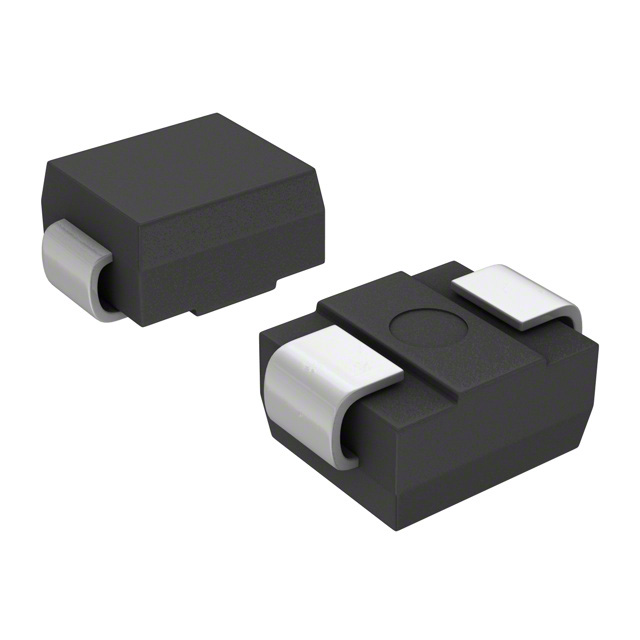Consulte las especificaciones para obtener detalles del producto.

P6SMB12A-E3/52
Product Overview
Category
The P6SMB12A-E3/52 belongs to the category of transient voltage suppressor (TVS) diodes.
Use
It is used to protect sensitive electronic components from voltage transients induced by lightning, inductive load switching, and electrostatic discharge.
Characteristics
- Voltage Suppression: Provides protection against voltage spikes and surges.
- Fast Response Time: Rapidly clamps transient voltages to a safe level.
- Low Clamping Voltage: Limits the peak voltage across the protected circuit.
Package
The P6SMB12A-E3/52 is typically available in a surface mount DO-214AA (SMB) package.
Essence
The essence of the P6SMB12A-E3/52 lies in its ability to safeguard electronic circuits from damaging voltage spikes.
Packaging/Quantity
It is commonly packaged in reels or trays, with quantities varying based on manufacturer specifications.
Specifications
- Standoff Voltage: 10.5V
- Breakdown Voltage: 11.7V
- Peak Pulse Power: 600W
- Operating Temperature Range: -55°C to 150°C
- Package Type: DO-214AA (SMB)
Detailed Pin Configuration
The P6SMB12A-E3/52 typically has two pins, with the anode connected to the positive side and the cathode connected to the negative side of the circuit.
Functional Features
- Transient Voltage Suppression: Effectively clamps transient voltages to protect downstream components.
- Fast Response: Quickly responds to voltage transients to prevent damage.
- Low Leakage Current: Minimizes power loss during normal operation.
Advantages and Disadvantages
Advantages
- Effective protection against voltage transients
- Fast response time
- Compact surface mount package
Disadvantages
- Limited to specific voltage ranges
- May require additional circuitry for comprehensive surge protection
Working Principles
The P6SMB12A-E3/52 operates by diverting excess transient current away from sensitive components, thereby limiting the voltage across the circuit to a safe level. When a transient voltage spike occurs, the TVS diode rapidly conducts, shunting the excess energy to ground and protecting the connected devices.
Detailed Application Field Plans
The P6SMB12A-E3/52 is commonly used in various applications, including: - Telecommunications: Protecting communication equipment from lightning-induced surges. - Consumer Electronics: Safeguarding sensitive electronic devices from electrostatic discharge. - Automotive Electronics: Shielding vehicle electronics from inductive load switching events.
Detailed and Complete Alternative Models
Some alternative models to the P6SMB12A-E3/52 include: - P6SMB6.8A-E3/52: Lower standoff voltage variant - P6SMB15A-E3/52: Higher standoff voltage variant - 1.5SMC12A: Through-hole mounting option with similar specifications
In conclusion, the P6SMB12A-E3/52 transient voltage suppressor diode offers effective protection against voltage transients, with fast response and low clamping voltage. Its compact surface mount package makes it suitable for a wide range of applications, from telecommunications to consumer electronics and automotive electronics. While it has specific advantages, such as fast response and compact size, it is important to consider its limitations, such as the need for additional circuitry in comprehensive surge protection systems.

